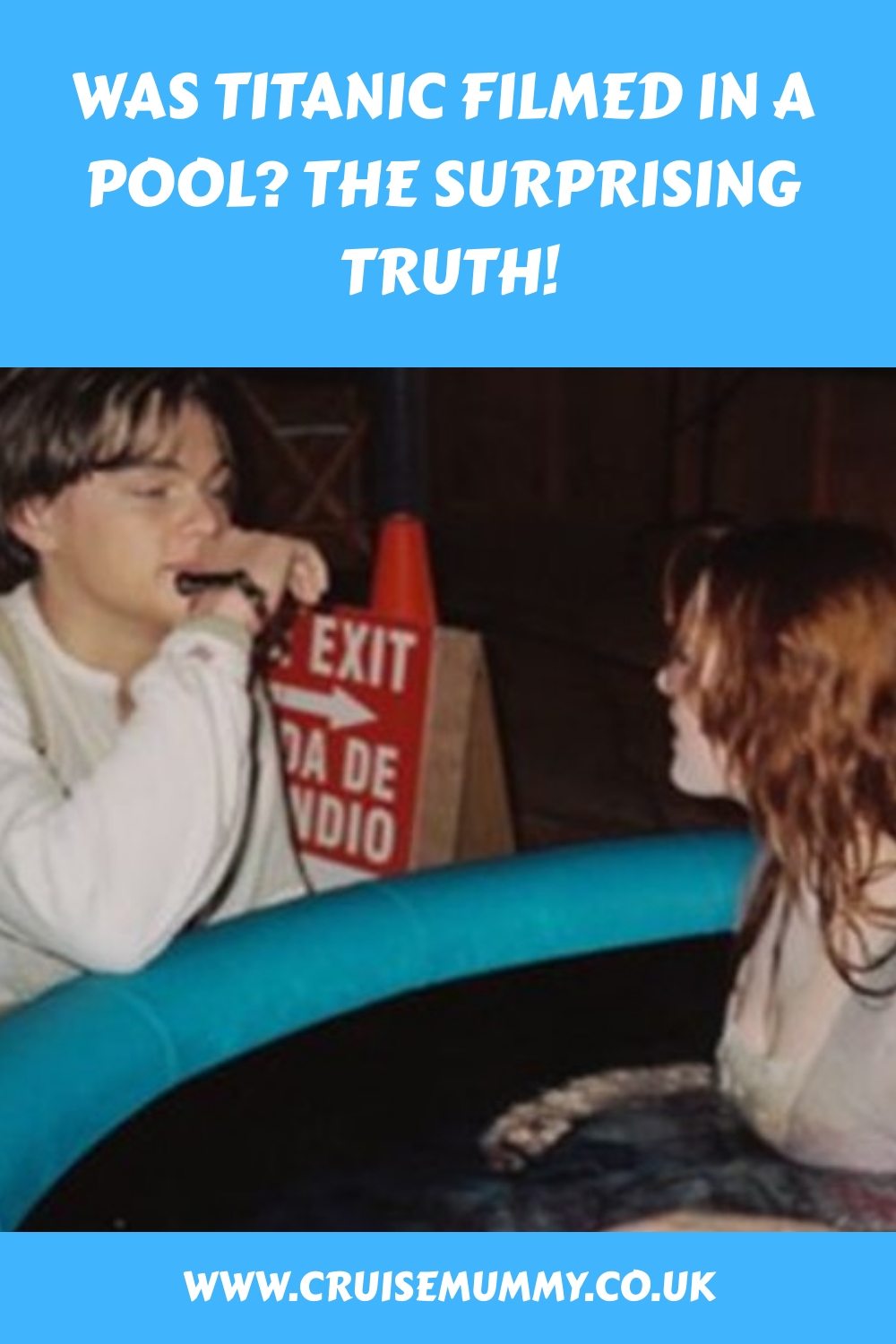Titanic is such an epic movie, that it brings questions to our minds about how they managed to film it. After all, a huge cruise ship sinking in the Atlantic Ocean isn’t your typical movie set!
One question that comes to mind is whether Titanic was filmed in a swimming pool or the ocean.
I wondered this too, so I dug deep into the research to bring you all the info about how Titanic’s watery scenes were filmed.
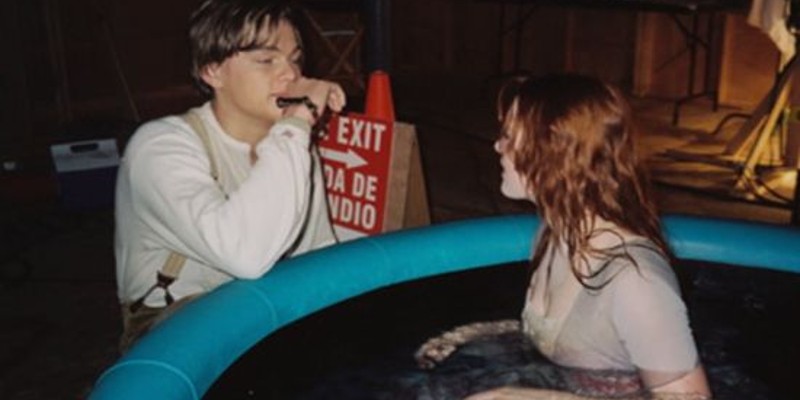
Yes, it is true!
Much of the 1997 movie, Titanic, was filmed in a pool. Baja Studios in Rosarito, Mexico had several massive water tanks that were specifically designed to replicate the North Atlantic Ocean. The water tanks were used to shoot many of the film’s water scenes, including the ship’s sinking.
Below, you can see Kate Winslet and Leonardo Dicaprio receiving instructions from director, James Cameron…
A full-sized replica of the Titanic was built on a gimbal to simulate the sinking, and miniatures were also used for certain shots. This combination of practical effects, models, and early digital effects created the illusion of the Titanic’s journey and tragic end.
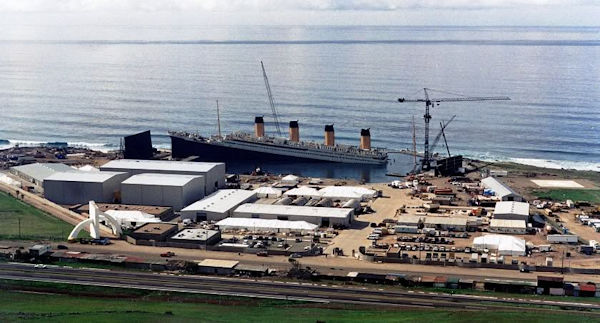
In addition to the scenes shot in Mexico, other scenes were filmed on location in Halifax, Nova Scotia (where many Titanic victims are buried) and at the actual wreck site in the North Atlantic Ocean.
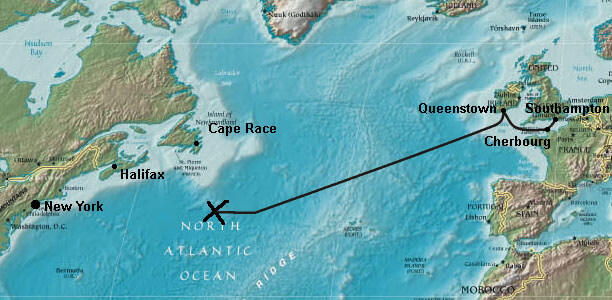
About the pools used to film Titanic
Baja Studios was a completely self-contained production facility that was built specifically for the Titanic movie. Although it has been used for other projects since, it has now been abandoned.
At Baja Studios, four separate water tanks were used in the Titanic movie, with a combined volume of over 75 million litres (20 million gallons). That’s as much water as 30 Olympic swimming pools!
The water tanks were cleverly built next to the ocean, to create an infinite horizon with a seamless join between the pool and the sea. Let’s take a closer look at each of them…
Tank 1
Tank 1 was a big, irregularly shaped pool made of concrete, covering more than 360,000 square feet (imagine a space about the size of 6 football fields).
Most of it was 3.5 feet deep, like the shallow end of a swimming pool. But there were two special deeper parts. One part was 130 feet by 200 feet, and it could be filled up to 40 feet deep. The other part was like a long, narrow channel, 30 feet wide and 300 feet long, and it could be filled up to 15 feet deep.
The two deeper sections could be filled separately before filling the whole pool. When the pool was full, there was a part on the side facing the ocean where the water overflowed. This made it look like the pool went on forever, blending in with the Pacific Ocean in the background.
Tank 1 could hold up to 17 million gallons of water. Filling it up or draining all the water took about 40 hours. There was also a tall tower crane, about half as tall as the Statue of Liberty, next to the pool. This crane could move around and was used for things like setting up lights, placing cameras, and building sets.
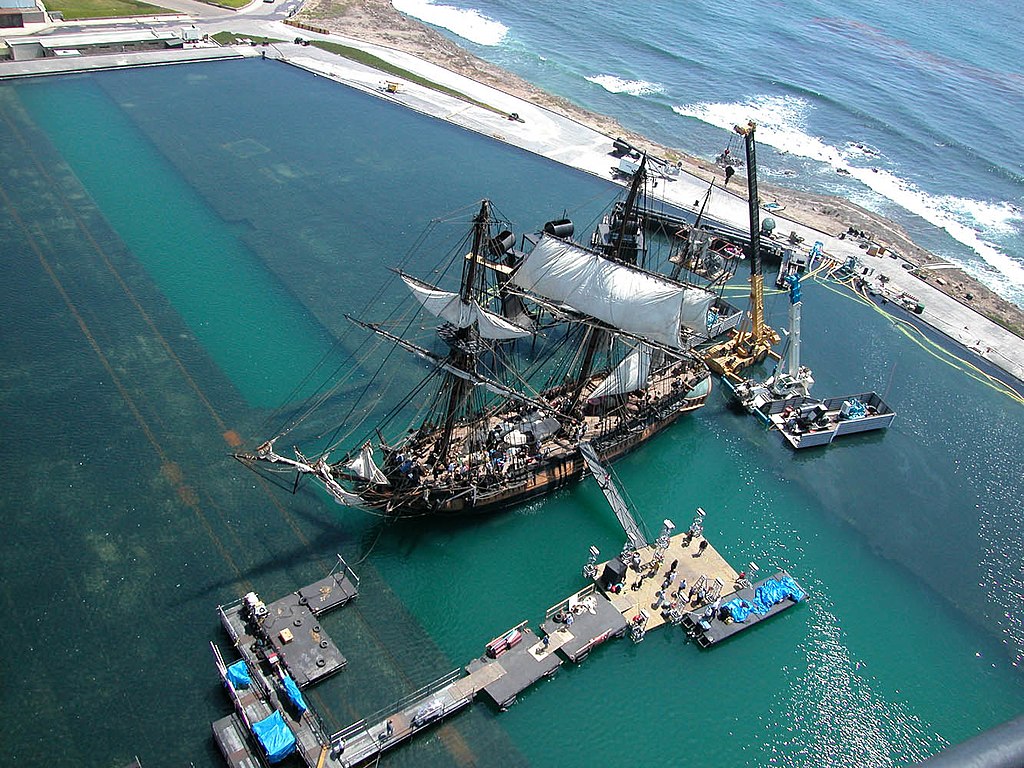
Comisión Mexicana de Filmaciones, CC BY-SA 2.0
Tank 2
Tank 2 about as big as a basketball court and was 29 feet deep. It could hold over 4.3 million gallons of water. The distance from the bottom of the tank to the lighting setup at the top was 75 feet.
You could get into the tank through four large roll-up doors or a 20-foot wide ramp that led to the bottom of the tank.
The tank’s water system was adjustable, allowing it to be filled to any depth over two feet. Inside the tank, there was a huge steel platform that was controlled by a special system. This platform could move up and down and tilt by up to 30 degrees. It could carry really heavy stuff, up to 600,000 pounds (that’s like 100 elephants!). However, if anything heavier needed to be lifted, it had to be balanced out by using floating devices.
The platform was designed to carry weight only in one direction – downwards. It could handle weights of up to 1.2 million pounds, such as people, furniture, or parts of the set.
Tank 3
The third tank was an outdoor pool that could be filled with either fresh or salt water. The inside of the tank was painted black, which made it great for certain types of filming like special effects, underwater scenes, and green screen photography.
There was a 10-foot wide ramp with grooves for grip, which made it easy to move equipment and machines in and out of the tank, whether it was full of water or dry. Above the tank, there was a big steel platform, about as big as a small house, that could tilt up to 90 degrees. This made it super flexible for different kinds of filming needs.
Tank 4
The final tank was about as big as a tennis court and almost 4 feet deep. There was also a special part near the middle of the tank that was a bit bigger than a car and 12 feet deep.
Two sides of the tank had a special design called an overflow weir. This is like a little waterfall where the water can flow over the edge. The walls behind this waterfall part could be covered with special materials or a green screen. This way, they could make it look like the water in the tank went on forever, like a never-ending horizon.
See how Titanic was filmed
If you’d like to see exactly how Titanic was filmed, and the pools that were used, I recommend that you take a look at this behind-the-scenes video…
During filming, the cast members spent a lot of time in the water tanks. They were discouraged from urinating in there, but apparently it happened.
In an interview on The Rosie O’Donnell Show, Kate Winslet stated: “You know, when you gotta go, you gotta go.”
“It was so awful because Leo would sometimes say to me, ‘Sweetie I gotta pee…’ It was terrible. It was awful. “
“And you always felt awful doing it. It took too long getting out, with the wet clothes. I confess. It happened. It happened.”
Related posts:
- How Cold Was The Water When The Titanic Sank?
- How Much Was A Ticket On The Titanic?
- Titanic Vs Modern Cruise Ships (Size Comparison)
- Will The Titanic Ever Be Raised?
- The Best Cruise Ship Movies
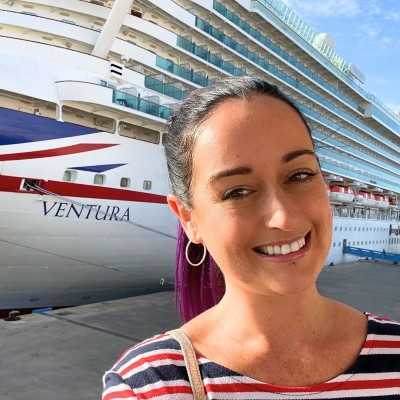
Jenni Fielding is the founder of Cruise Mummy. She has worked in the cruise industry since 2015 and has taken over 30 cruises. Now, she helps over 1 million people per month to plan their perfect cruise holidays.

